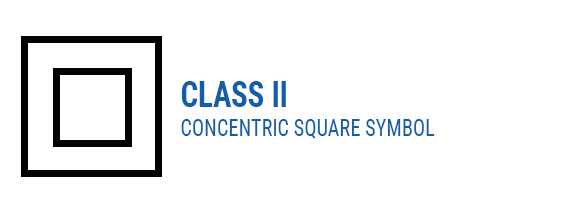What is the Difference Between IEC Class I and Class II Input?
已发布 六月 08, 2018 由 Advanced Energy Editor
What is IEC?
The IEC (International Electrotechnical Commission) is an international body that sets safety standards for the electrotechnology space. The Class I and Class II input designations refer to the internal construction and electrical insulation of a power supply. These standards were developed to protect the user from electric shock.
What is IEC Class I and Class II?
IEC Class I input models have basic insulation and must incorporate a protective earth (ground) connection to mitigate the risk of electric shock.
IEC Class II input models feature additional safety precautions such as double insulation or reinforced insulation, thereby eliminating the need for a protective earth (ground) connection. Therefore, Class II input power supplies have a 2-pin input receptacle [IEC60320 C8 or C18 type] instead of the 3-pin input receptacles found on Class I input models.
.jpg)
Many mobile phone chargers, laptop power supplies, and other household appliances feature Class II input to ensure the safety of people in their homes. Power supplies featuring Class II input display “Class II” or “Double Insulated” or the Concentric Square Symbol on the safety label.
.jpg)
The growing demand for medical devices designed for home health care applications is one of the primary drivers of the medical industry. Contributing factors fueling this demand include a growing and aging population, increasing life expectancy, increasing rate of chronic disease, economic factors, advances in technology, etc. This augments the need for Class II input models which are required under IEC60601-1 for medical equipment and systems developed for home healthcare applications.
SL Power’s product development is aligned to meet these changing market needs, which is evident in recent Coming Soon product announcements: MB120 Class II & MB60 Class II. At SL Power, our mission is to power products that Save & Sustain Lives.
